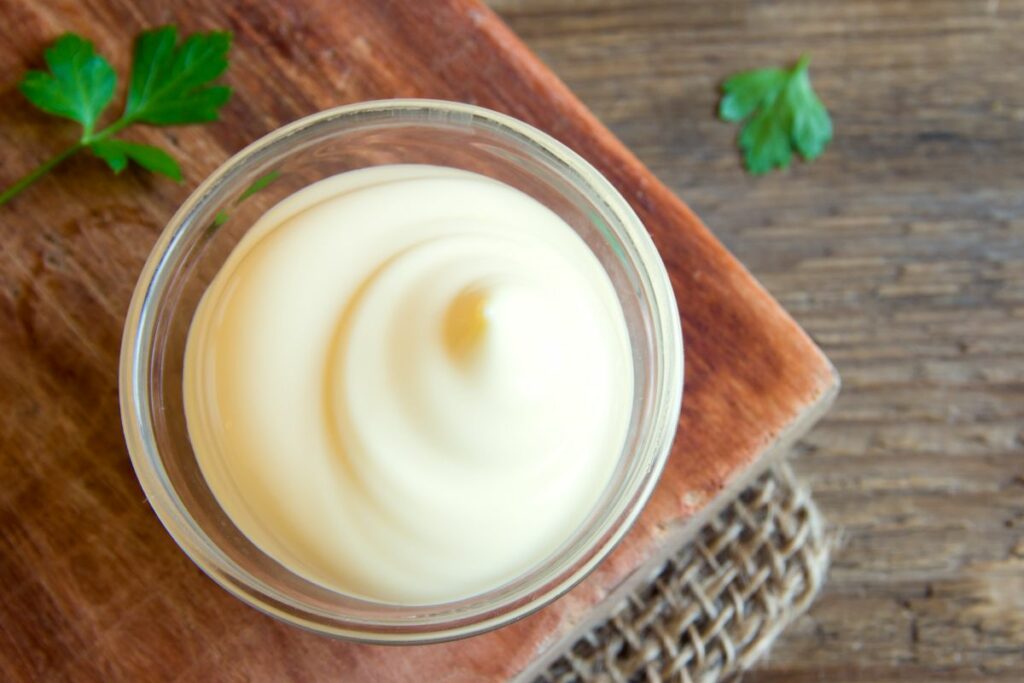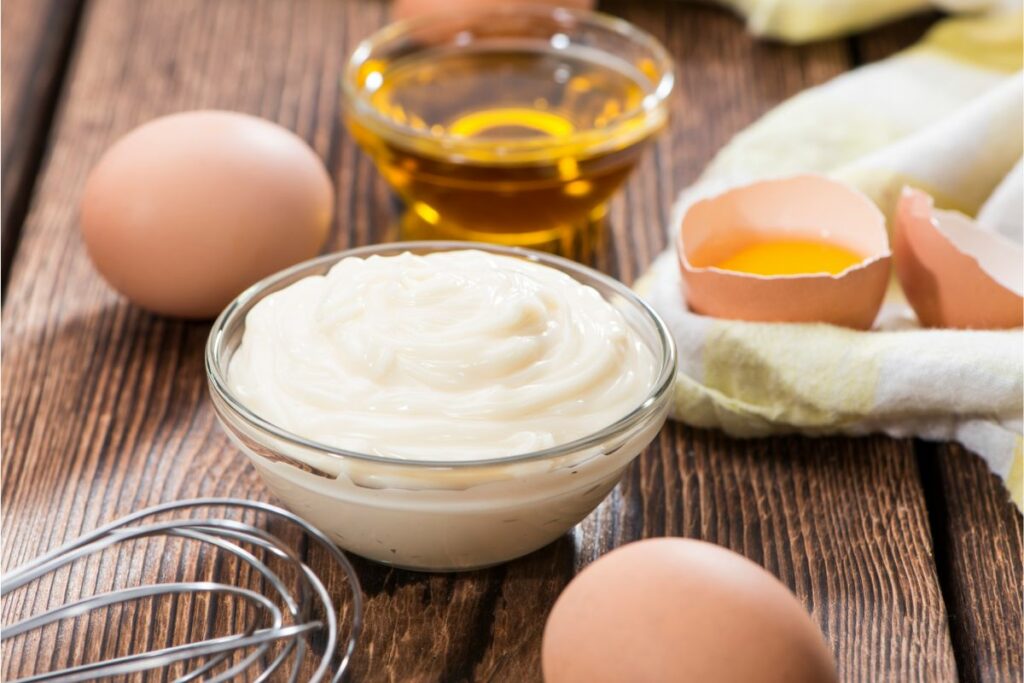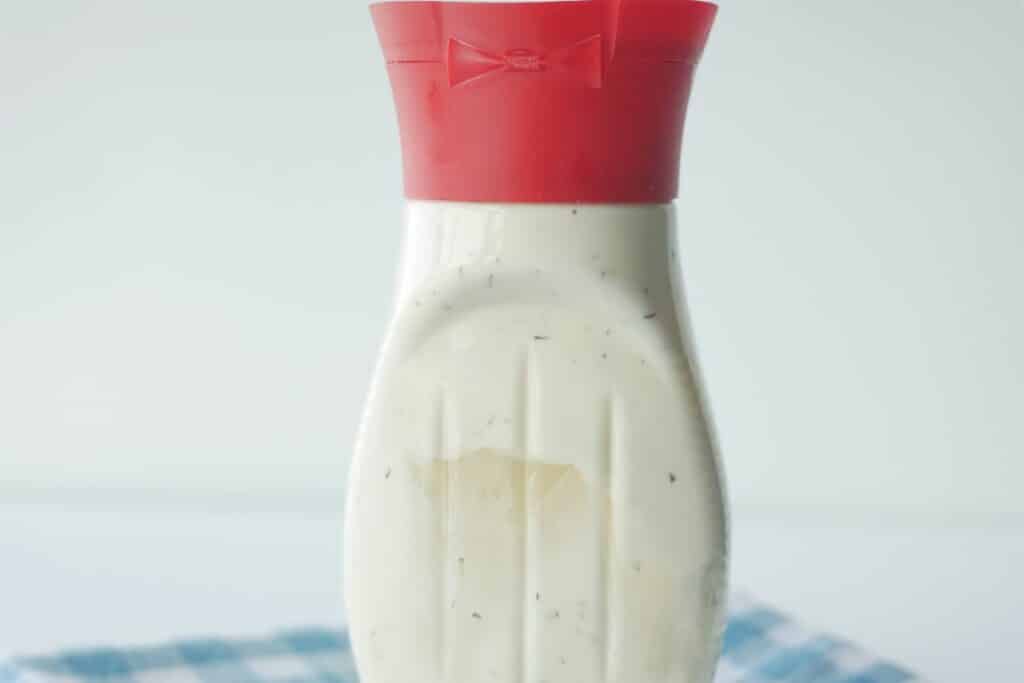Mayonnaise, or mayo, is one of the most popular condiments worldwide that adds a layer of creamy flavor to whatever dish it is included in.
It’s commonly used as a spread in sandwiches and burgers, a base for salad dressings, and an ingredient in all kinds of different sauces and dishes.

However, one of the downsides to mayo is its shelf life, and like any food product, it can go bad if it is not properly stored.
If you have some mayo in your pantry that you’re trying to figure out if it’s gone bad or not, you could be left scratching your head. How can you tell if your mayo has expired?
If you’re wondering about this, then you’ve come to the right place! In this article, we’re going to be exploring how long mayo lasts, how to tell if it has expired, what exactly it is that makes mayo go bad, and how you can correctly store your mayo.
How Long Does Mayo Last For?
Because of its high-fat content, which acts as a natural preservative, mayo has a relatively long shelf life. However, before using the jar or bottle, make sure to check the expiration date.
Unopened mayonnaise can usually be stored in a cool, dry place away from direct sunlight and heat sources for 3 to 4 months after the printed date.
This is only a general guideline; some brands may have slightly different recommendations; always refer to the specific product’s packaging.
Mayonnaise has a shorter shelf life once opened. It is generally advised to use opened mayonnaise within 2 months of opening if stored in the refrigerator.
After this time, the quality may begin to deteriorate and it becomes more susceptible to bacterial growth, potentially leading to foodborne illness.
It’s important to note that these are estimates, and the actual shelf life will vary depending on factors like mayo quality, storage conditions, and handling.
How To Tell If Mayo Has Expired
While checking the expiration date is the first step, there are other indications that mayo has expired. Here are a few signs that your mayonnaise is no longer safe to eat:
Visual Changes
Check the mayo for discoloration or mold growth. If you notice any unusual colors, such as green, pink, or black, it’s a sure sign that the mayo has spoiled and should be discarded right away.
Odor
Another sign that mayo has gone bad is a significant change in odor. If it develops a sour, rancid, or unpleasant odor, it is best to discard it.
Texture
Mayonnaise should be smooth and creamy in texture. Any separation, clumping, or curdling is an indication of spoilage. Furthermore, the presence of liquid or watery separation indicates that the mayo has gone bad.
General Tips For Checking
When evaluating the quality of mayo, it is critical to trust your senses and use common sense. If in doubt, it is always safer to discard it to prevent the risk of foodborne illnesses.
If you notice any of the indicators above are different from what you’d imagine good, in-date mayo to be, then we’d suggest exercising caution.
What Makes Mayo Go Bad?
At this point in our article, you may be wondering why mayo has a shorter lifespan than some other sauces, for example, ketchup or Worcestershire sauce.
This has a lot to do with the ingredients that go into making mayo and the delicious condiment that it is. In the sections below, we’re going to go in-depth at some of the main reasons why mayo goes bad – sometimes faster than you may expect!
Bacterial Growth
Mayonnaise is made with raw eggs or egg yolks, which can contain bacteria such as Salmonella. If mayonnaise is contaminated with these or other bacteria, it can cause foodborne illness if consumed.
To reduce this risk, commercial mayonnaise is frequently pasteurized or made with pasteurized eggs.
Oxidation
Mayo can oxidize when exposed to air, resulting in changes in flavor, texture, and color. This is why, when not in use, mayo should be tightly sealed. Mayo that has been oxidized may have a metallic or off taste as well as a yellowish tint.
Temperature Problems
Storing mayonnaise at temperatures outside of the recommended range can hasten spoilage. Mayo should be stored in a cool place, preferably below 50°F (10°C), to slow bacterial growth and preserve its quality.
Temperature abuse, such as leaving mayonnaise out at room temperature for extended periods of time, can create favorable conditions for bacteria to multiply quickly, resulting in spoilage.
Cross-Contamination
Mayonnaise can also spoil if it comes into contact with contaminated surfaces, utensils, or foods. To avoid cross-contamination and maintain the integrity of the mayo, it is critical to practice good hygiene and proper food handling.
How To Correctly Store Mayo (Two Ways)

Now that we’ve covered some of the main reasons that may spoil, let’s take some time to consider how we can stop these processes from happening (or happening faster than we would have liked!)
When it comes to getting the most out of your mayo – whether it’s homemade or store-bought – storage is everything!
Proper storage is essential to maintaining the freshness and safety of mayonnaise. Here are two recommended ways to store mayo correctly, along with some additional tips.
Make sure you follow these instructions carefully to ensure that you don’t cause any kind of illness from eating mayo that has expired.
Method 1: Refrigeration
Refrigeration is the most common and efficient method of storing mayonnaise. For proper refrigeration, follow these steps:
Place In A Clean Container
Transfer the mayonnaise from its original container to a clean, airtight container once opened. This helps to prevent contamination and keeps the mayo’s quality high.
Regulate The Temperature
Refrigerate the mayonnaise container at temperatures below 50°F (10°C). It is critical to keep mayonnaise in a cool area of the refrigerator, such as the main compartment or the door shelves.
Avoid putting it near the back of the refrigerator, where temperatures may be colder and fluctuate more.
Make Sure The Container Is Tightly Sealed
Make sure the container is tightly sealed to avoid air exposure, which can cause oxidation and quality loss. This will also keep strong odors from other foods in the refrigerator at bay.
Avoid Cross-Contamination With Other Food
To avoid cross-contamination, keep mayonnaise separate from raw meat, poultry, and seafood. Make sure to put it on a shelf or in a separate location away from these items.
Check For Spoilage Before Use
Inspect the mayo on a regular basis for signs of spoilage, such as discoloration, mold growth, off odors, or unusual texture. If any of these signs appear, discard the mayo immediately.
Method 2: Pantry Storage
Unopened mayo can be stored in a cool and dark pantry if the temperature remains consistently below 50°F (10°C). Follow these guidelines for pantry storage:
Choose The Right Spot
Unopened mayo should be stored in a cool, dark place in your pantry. Places near the stove, oven, or any other source of heat should be avoided. Direct sunlight, high humidity, and temperature fluctuations can all degrade the quality of the mayo.
Check The Packaging Over
Make sure the mayo is in an unopened, sealed container. If the seal is broken or the packaging is damaged, do not use it and instead discard it.
Use A Rotation System
If you regularly stock mayo in your pantry, practice a “first in, first out” approach. If you keep mayo in your pantry on a regular basis, follow the “first in, first out” rule.
This means consuming the mayo with the earliest expiration date first, ensuring that it is consumed before it expires.
Transfer To The Refrigerator
To extend the shelf life of mayonnaise, store it in the refrigerator once opened. Place it in an airtight container and proceed with the steps outlined above in the refrigeration section.
Important Note: While pantry storage is appropriate for unopened mayo, refrigeration is the preferred method for maintaining the freshness and safety of opened mayo.
Extra Storage Tips

Do Not Freeze Mayo
Freezing mayo is not recommended because it can cause the emulsion to break, affecting the texture and flavor. When thawed, mayo may become watery and separate, resulting in an undesirable consistency.
Light And Heat Are Not Your Friends
Mayo is heat and light sensitive, which can hasten spoilage. Keep it away from direct sunlight, stoves, ovens, and other heat sources when storing it. Excessive exposure to light and heat can cause oxidation and flavor degradation.
Use Sanitized Utensils
Use clean utensils to scoop mayo from the jar or container to avoid introducing contaminants that could hasten spoilage.
Use Labels
If you make your own mayonnaise, mark the container with the date it was made. Due to the use of raw eggs and the lack of preservatives, homemade mayo has a shorter shelf life than store-bought mayo.
It is best to consume homemade mayo within a week and to keep it refrigerated at all times. Using labels is common practice within commercial kitchens, and is a consistent way of keeping track of expiration dates.
Avoid Double-Dipping
This is a lesser-known tip, but it is one to remember! To avoid cross-contamination and the introduction of bacteria into the mayo, avoid double-dipping utensils and spreading mayo directly from a knife or spoon onto bread or other surfaces.
Instead, before spreading, use a clean utensil or squeeze the desired amount of mayo onto a separate plate or bowl.
Maintain Consistent Temperatures
Ensure that the temperature in your refrigerator stays below 50°F (10°C). Temperature fluctuations can jeopardize the quality and safety of the mayo.
It’s a good idea to check the temperature with a refrigerator thermometer on a regular basis to ensure it stays within the recommended range. The same is true for pantries, though their temperature can be much more difficult to regulate.
Final Thoughts
So that comes to the end of our comprehensive guide on how to tell if mayo has expired, and how to correctly store it. We hope that this article has outlined everything you needed to know, and you’re now more confident about this subject. If you still have questions, keep reading for a short FAQ section below.
Frequently Asked Questions
Homemade mayonnaise typically has a shorter shelf life than store-bought mayonnaise. Homemade versions are more susceptible to bacterial growth because they frequently contain raw eggs and lack preservatives.
It is best to consume homemade mayo within a week and to keep it refrigerated at all times.
It is not advised to reuse mayonnaise that has been left out at room temperature for an extended period of time.
Bacteria can multiply quickly in such conditions, increasing the risk of foodborne illness. To ensure safety, mayo that has been left unrefrigerated for more than two hours should be discarded.
Separation in mayo refers to the oil and solids inside separating. If this has happened to your mayo, then the best choice is to discard it. Separation is one of the signs of spoilage, and the quality will be bad if not dangerous.






